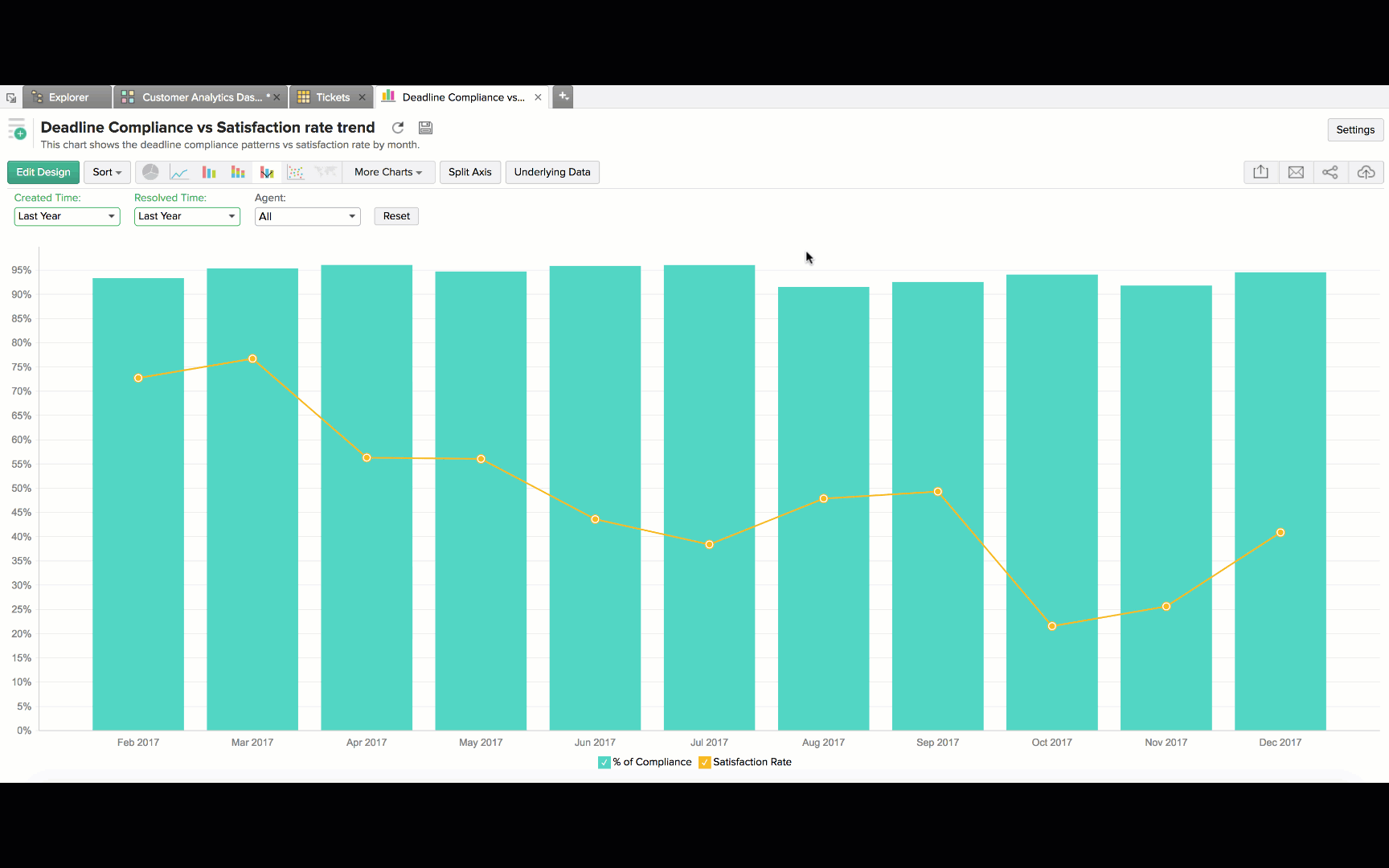In our previous posts on Help Desk Analytics (Part 1, Part 2), we spoke about monitoring key metrics in order to measure and improve customer support. In this post, we’re going to be discussing how analytics can help you know more about your customers and thereby help drive your business’ success.

Imagine you’re a customer support manager looking at data about your support team’s performance. Information like incoming tickets, resolution time, SLA rates, and escalations lie in a proverbial heap. While you see that your team is performing well, your low customer happiness rating never seems to get any better.
This is when data analytics can help you find out the problems that could be derailing your progress. In these cases, customer support data is really a treasure trove waiting to be analysed. That’s why we’ve gone ahead and listed some of the key metrics that are integral to boosting customer happiness.
Support satisfaction vs resolution time
“82% (of customers) say that getting their issue resolved quickly is the number 1 factor to a great customer service experience.” – LivePerson
Resolution time is one metric that can directly affect how satisfied your customers are. This report shows high-resolution times resulted in reduced customer satisfaction rating. Knowing this trend will help you train your agents better, allot tickets of different severity levels to suitable agents.
Satisfaction rate vs Deadline compliance
Your deadline compliance rate can make or break your business. This report shows you how maintaining deadline compliance rates have resulted in high support satisfaction rates.
But knowing this might not always be enough. You might want to know why your deadline compliance rates have dropped, which requires deeper analytics. Zoho Analytics enables you to achieve this. The interactive capabilities such as drill-downs and filters will enable you to carry out in-depth analytics and find out why your compliance levels have dropped. You can drill down and slice and dice your data to specific months, agents and find out:
- The contribution of each agent
- Agents who are not able to maintain the compliance levels
- The kind of tickets that are causing the most chaos
The following animation shows you how you can drill down to specific data points.

Not being able to live up to the fixed compliance rates could also be an indication that you’ve set unrealistic goals for your team.
Account specific analysis:
Analysing account/domain specific details can help you find who your most loyal customers are, how your team handles priority customers, understand who has the most issues with your service. That apart, you can also understand their needs and upsell your product/service to them. We have hand-picked a few important metrics for you.
Accounts with the Most Unresolved Tickets:
“91% of customers who had a bad customer experience won’t be willing to do business with your company again.” – Glance
Long-overdue, unresolved tickets can severely hurt your reputation. Instead of going through every single account, one by one, this table provides a view of the top ten accounts with the most unresolved tickets. This will help you check on the issues, reach out to the customers quickly, and prioritize solving their problems.
How many unresolved tickets do you have? What is the status? What is the average ticket age? The below report will answer all these questions.
On the other hand, analysing deeper will also find out the issues and constraints inside the product that cause the most tickets. This will enable you to improve your product and support quality.
Accounts with high resolution time
As we mentioned earlier, resolution time is an important metric that one needs to keep an eye on. If you have an SLA signed with certain organizations/accounts, it’s very important to resolve their tickets on time. This report shows you the domains with the longest resolution times. Constantly monitoring these accounts could save you from financial and legal risks due to SLA violation. You can understand the complexity of issues, and distribute tickets to your experienced resources.
Knowing the issues will also help you provide specialized, domain-specific training to your users. You can offer them a personalized user education program and help them get the most out of your product/service.
Accounts with maximum ticket load
As your business grows, the number of incoming tickets increases. Monitoring this count will help you understand a wide range of metrics such as business progress and its impact on customer support, support team scalability, quality and usability of the product, etc. Tracking the users with maximum requests will also enable you to upsell your products/bundles thereby increasing your revenue.
Zoho Analytics offers the following prebuilt dashboard for Help Desk users. This will provide you with an accurate view of your entire customer base under one roof and give you valuable insights into customer behaviour, satisfaction rate, escalations and lots more.
The more you know customers, the less you need to worry about losing them. This holds true, not just for businesses in general, but for running a successful help desk too. Knowing your customer base helps you serve them better, increase the satisfaction rates and thereby increase your revenue.
Customer analytics will help you serve your customers better and retain them over the long run. Make data-driven decisions about how best to acquire, retain, and proactively interact with customers, as well as identify high-value customers. Want to know more?
Set up Zoho Desk Advanced Analytics now!
This is a great feature. Is there a guide on how to acheive the reports across the Zoho CRM and Zoho Desk datasets. At the moment we have the integration but I am not sure how to combine the two .